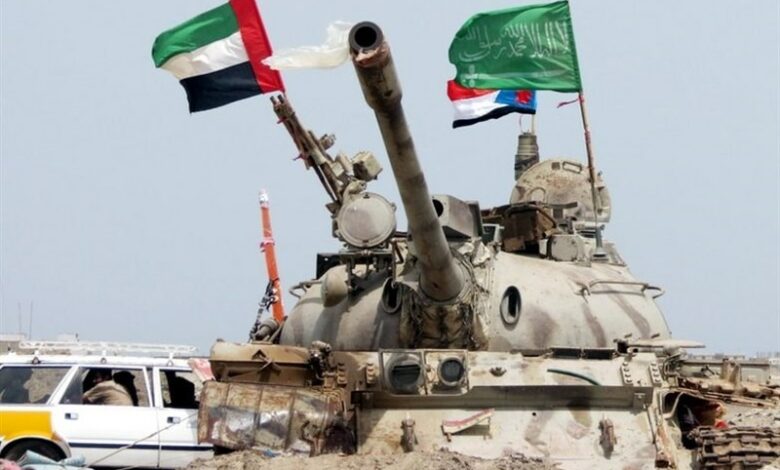10th anniversary of military aggression against Yemen; What is the prospect of solving the crisis?

| The 10th anniversary of the military aggression of Saudi Arabia and the Arab coalition against Yemen has passed while the prospect of a complete solution to the crisis in this country is more ambiguous than ever. |
According to the international group Tasnim news agency, the Ansarullah movement has control over 70% of the useful land and the population of Yemen due to its popular support and military and managerial ability, and it has managed to maintain acceptable security and economic stability in the areas under Create self-control. It is not an exaggeration to claim that this success was one of the main reasons for Ansarullah’s entry into the regional and international role during the Al-Aqsa storm.
It seems that the main part of the crisis in Yemen, i.e. the end of the civil war and reaching a political agreement between Yemeni political groups, which will lead to the establishment of a comprehensive government in the geography of Yemen, is still far from reach, and therefore it is possible that the achievements of the Ansarullah movement in is in danger.
The recent statement of the UN Security Council regarding Yemen can be considered as a window to examine the legal status of this crisis. . In this statement, Ansarullah’s operations in the Red Sea and the Gulf of Aden are strongly condemned and the need for the full implementation of Resolution 2216 (issued in April 2015) is emphasized again.[1] This emphasis shows that this resolution is one of the most important legal texts in the Yemen crisis, and rereading it can be useful for a better understanding of the knotty points of this case.
UN Security Council Resolution 2216
First, that it requests Ansarullah to take Sanaa and all the areas under its control as soon as possible. unload and hand over all the weapons in its possession to the government of Mansour Hadi. The area of competence of the Yemeni government is by the Ansarullah movement. Ansarullah and the National Salvation Government of Yemen do not agree, and this issue has overshadowed Ansarallah’s ability to conduct international business, obtain financial resources abroad, and even political and diplomatic relations with other countries of the world, which can be seen as one of the examples To expel Ansarullah’s ambassador from Damascus and hand over control of the Yemeni embassy in Syria to the Saudi-backed government in October 2023[2] pointed out.
Another important emphasis of this resolution is the complete arms embargo on Yemen. This resolution, referring to Yemen being placed under the seventh paragraph of the United Nations Charter in the previous resolutions of the Security Council, creates the legal infrastructure for a complete blockade of Yemen under the pretext of an arms embargo, and this blockade is one of the main tools of Saudi Arabia and the UAE to pressure the Yemeni people in It was the duration of the military aggression of the Arab coalition in Yemen.
>Threat to international security
Despite reputation Resolution 2216 in the case of Yemen seems to be the most important resolution of the Security Council regarding this country, Resolution 2140 passed in February 2014. This resolution clearly and for the first time identified Yemen as a threat to international security and placed it under the seventh chapter of the United Nations Charter. This issue, which has been confirmed and emphasized in all legal texts of the United Nations Security Council, should be considered the most important legal ground underlying foreign interference, blockade and embargo on Yemen in the last decade.
The experience of the use of the legal instrument of the Security Council resolutions against Iraq by the West and the United States shows that the Westerners are not willing to abandon this instrument under any circumstances. Iraq, which was included under the seventh chapter of the United Nations Charter in 1990 after the invasion of Kuwait by the Security Council, and the United States and the United Kingdom used this legal infrastructure as a basis for military aggression against Iraq in 2003, until ten years after the fall of Saddam. It remained under this chapter and the permanent members of the Security Council in 2013 refused to remove the name of this country from the seventh chapter of the United Nations Charter.[3]
Persian Gulf Cooperation Council plan and national dialogues
In 2011 and after a long The protests of the Yemeni people during the Islamic awakening, the Persian Gulf Cooperation Council tried to end this crisis by proposing a plan. The main elements of this plan included the departure of Saleh and the beginning of the process of drafting a new constitution by the transitional government.
With the departure of Saleh and the start of the national dialogue session with the presence of representatives from all Yemeni parties, groups and currents, the issue of the south and the issue of Saada, which have been discussed since the beginning The 90s had led to major crises and even civil wars in this country, and they were raised as the two main issues of Yemen. The Southerners and Ansarullah, who had a history of armed conflict with the central government, demanded guarantees not to repeat the past, and after their demands were not met, they withdrew from these talks and did not approve its approvals.[5]
The important point about these two documents is that while the plan The Persian Gulf Cooperation Council was implemented almost completely from the beginning of 2012 to the middle of 2014, and the process of negotiating the national dialogues and approving its results was also followed, but the Security Council at the beginning of 2014 and two years after following the processes approved by the Cooperation Council plan Persian gulf; It identified Yemen as a threat to international security and put it under the seventh chapter of the United Nations Charter.
Third path
With Ansarullah entering into a direct conflict with America and the Zionist regime during the Al-Aqsa storm, it seems that we have to wait for a new wave of political and field efforts by the Westerners to contain Ansarallah. Considering the existence of the legal infrastructure for the embargo and blockade of Yemen, the bogus claim of the United Kingdom and the United States regarding the arrival of Iranian ships and the repetition of the unproven claim of the transfer of weapons to Hodeidah port without the consent of the government of Aden in the March 14th meeting of this council [6] can be used as a prelude to return the blockade pressure to the north of Yemen.
The experience of resistance has proven that the West has always used legal infrastructure as a pressure lever against its rivals and is not willing to give up on them in any way. In addition, the Westerners, especially the United States and the United Kingdom, did not even tolerate the defense of the legitimate rights of the Palestinian people and directly took military action against Yemen.
The pattern of political negotiations like what happened in the JCPOA or even the stabilization of the government in the Syrian model and Caesar’s sanctions against Bashar al-Assad’s government in Syria show that a third path must be taken to break the pressure of these sanctions.
Author: Ahmed Haji Sadeghian, expert on Yemen issues
[1] . See
https://press.un.org/en/2024/sc15631.doc.htm
[2] https://english.aawsat.com/arab-world/4602651-syria -returns-yemeni-embassy-damascus-legitimate-gov%E2%80%99t
[3] https://www.iraqiembassy.us/article/un-security-council-votes-to-remove-iraq-from-chapter-vii-sanctions
[4] See
https://yemen-nic.info/sectors/politics/trans/initiative.php
[5] https:// www.aljazeera.net/news/2013/10/10/Al-Houthiyun-and-Al-Harak-Yarqalun-Al-Hawar
[6] https://www.securitycouncilreport.org/monthly-forecast/2024-04/yemen-65.php
| © | Webangah News Hub has translated this news from the source of Tasnim News Agency |


